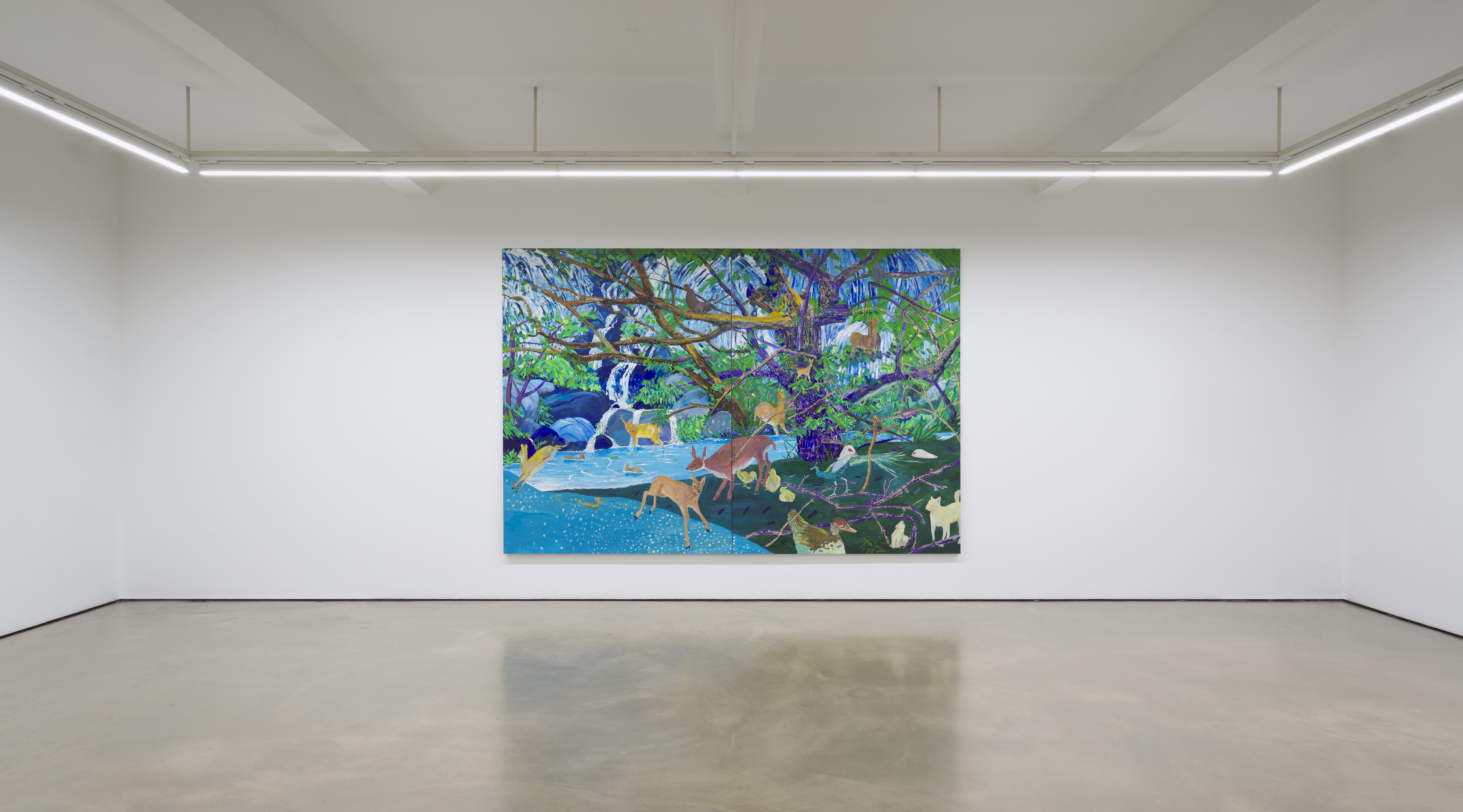밝은 곳에 서있다
2025. 9. 10 – 10. 18 | [GALLERIES] GalleryMEME
이기영
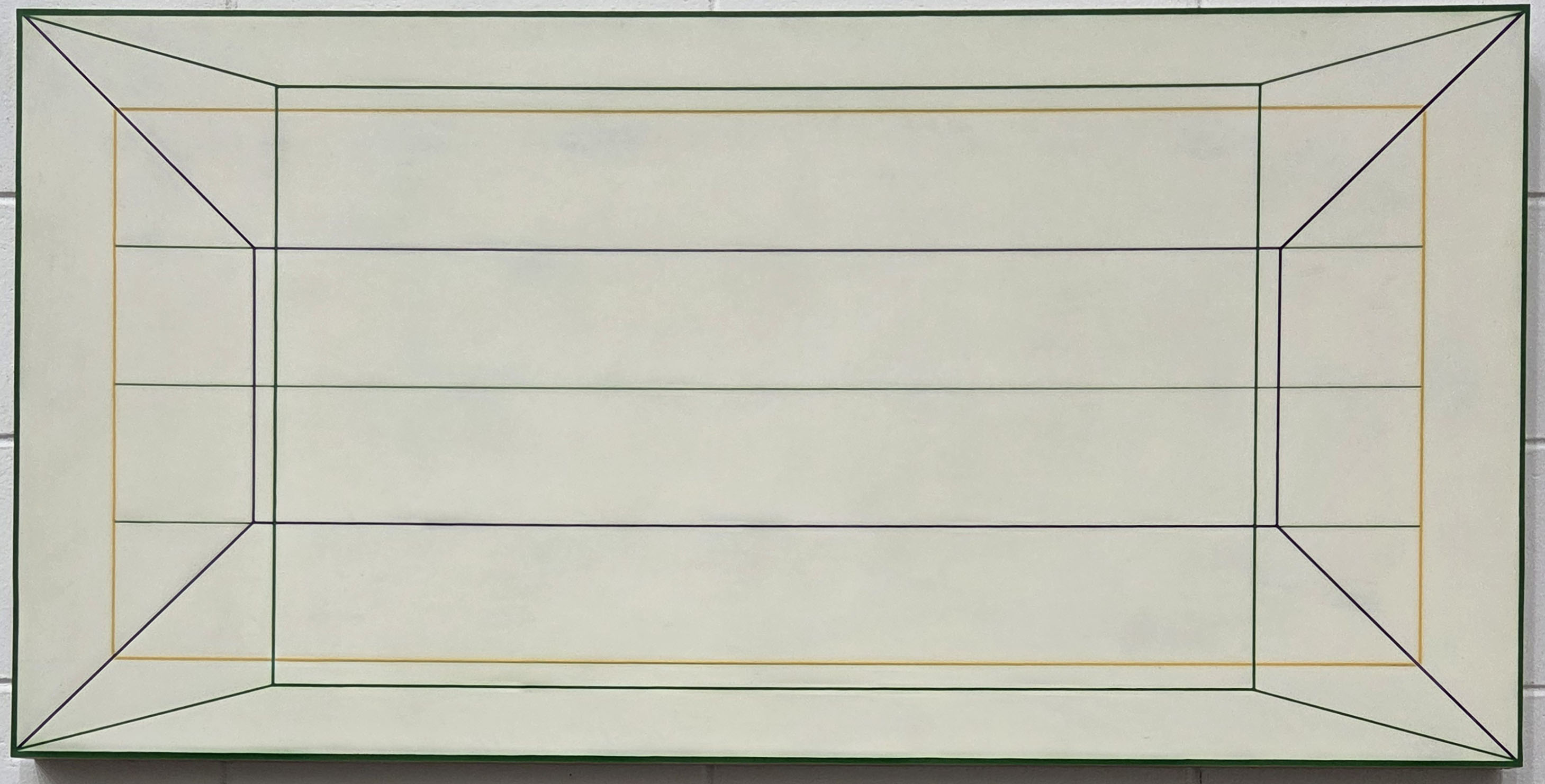
Cat’s cradle 05, Mixed media on Korean paper, ink cake, pigment, 60x120cm,2025
전시서문
생성으로 향하는 여정
불연속적 평면
눈앞에 하나의 평평한 회화면이 있다. 더 정확하게 말하면 평평한 것처럼 보인다. 그러나 실은 여러 겹의 석회칠 위에 올려진 먹을 지워간 흔적과 그 위를 뒤덮은 여러 층의 바니시를 다시 직선으로 파내고 안료로 채워진 평평함이기에 불연속적 면이다. 익히 잘 알고 있는 상감기법이 사용되었다. 우리 앞에 그 화면 속 어떤 것도 재현을 의도하고 있지 않다. 먹의 흔적과 여러 색선은 무엇인가를 닮지 않았고 어떤 환영을 일으키려는 목적도 갖고 있지 않다. 다만 긴 시간 속 일어났던 과정들의 흔적을 품고 있을 뿐이다.
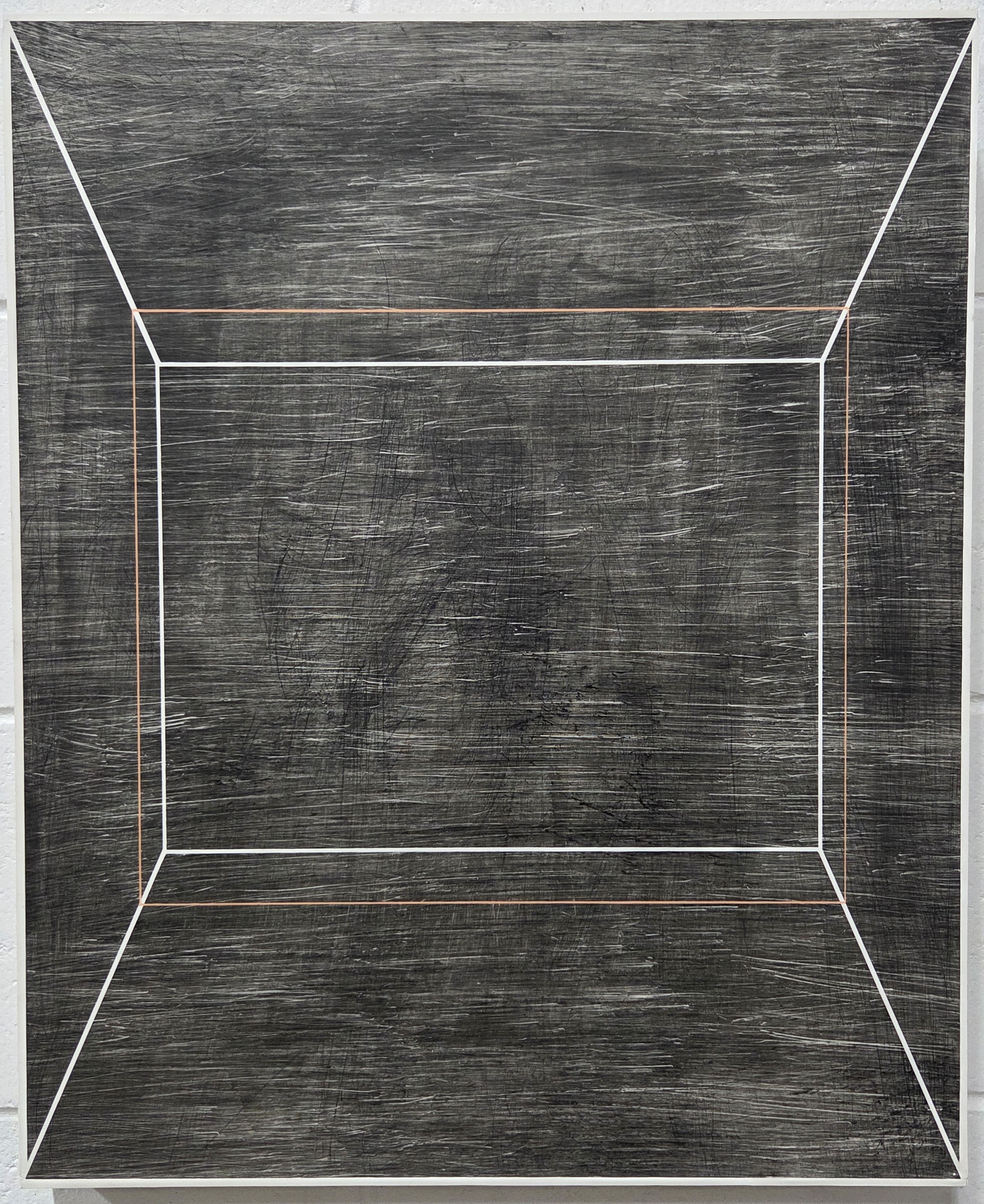
Cat’s cradle 06, Mixed media on Korean paper, ink cake, pigment, 55x45cm,2025
생동
2016년 개인전을 앞두고 만났던 작가 이기영은 자신의 작품세계가 자연에서 출발하였으나, 지우기라는 행위를 통해 작품이 작가에 의해 형성되는 단순한 대상이 아닌, 작가 주체와 보다 밀착된 무엇이고자 했고 그렇게 ‘먹꽃’ 연작이 탄생하였다고 설명하였다. 그리고 그 당시 개인전에서 소개된 작품들은 한 단계 더 나아가 먹꽃의 형상이 보이지 않을 정도로 물로 지우고, 다시 지워내며 많은 것을 비워내었기에 영도(zero)에 다가가려는 행위의 결과물로 보였다.
9년 후 다시 만난 이기영의 작업은 이제는 존재와 부재, 질서와 자유, 구조와 해체의 조화로움으로 (또는 긴장으로) 향하고 있었다. 이러한 방향 전환에 따라 작가의 행위, 즉 수행성은 더욱 강화되어 있었다. 다시 그의 작업의 평면을 분석해보자. 그는 감정을 일으키는 순간에 이끌린다. 과거의 기억에서 출발하여 먹으로 쓰거나 그려내고 그것을 다시 손으로 지우면서 어떤 감정이 촉발될 때 몸의 동작을 멈춘다. 이 바탕 작업은 이후 정교한 본 작업 단계로 넘어간다. 작가의 계산된 구상을 바탕으로 여러 개의 색선을 만들게 되는데, 직선을 파내어 안료를 채워넣는 상감기법을 적용한다. 무수한 사포질을 통해 표면은 완전히 연속적인 하나의 면처럼 보이게 된다. 이 본 과정은 생각보다 훨씬 더 세밀함을 요구하기에 신체가 자아내는 긴장감이 작품에 내재하게 된다. 그 선들은 바라보는 위치마다 다르게 보일 수 있도록 정확하게 계획된 위치와 색을 갖고 있다. 관람자가 작품에서 얼마만큼의 거리를 갖는냐에 따라 작품은 계속해서 다른 모습으로 변화하는데, 색선들은 정지된 화면이 아니라 작품이 ‘기운생동’의 구조를 갖도록 고려된 중요한 요소들이다.
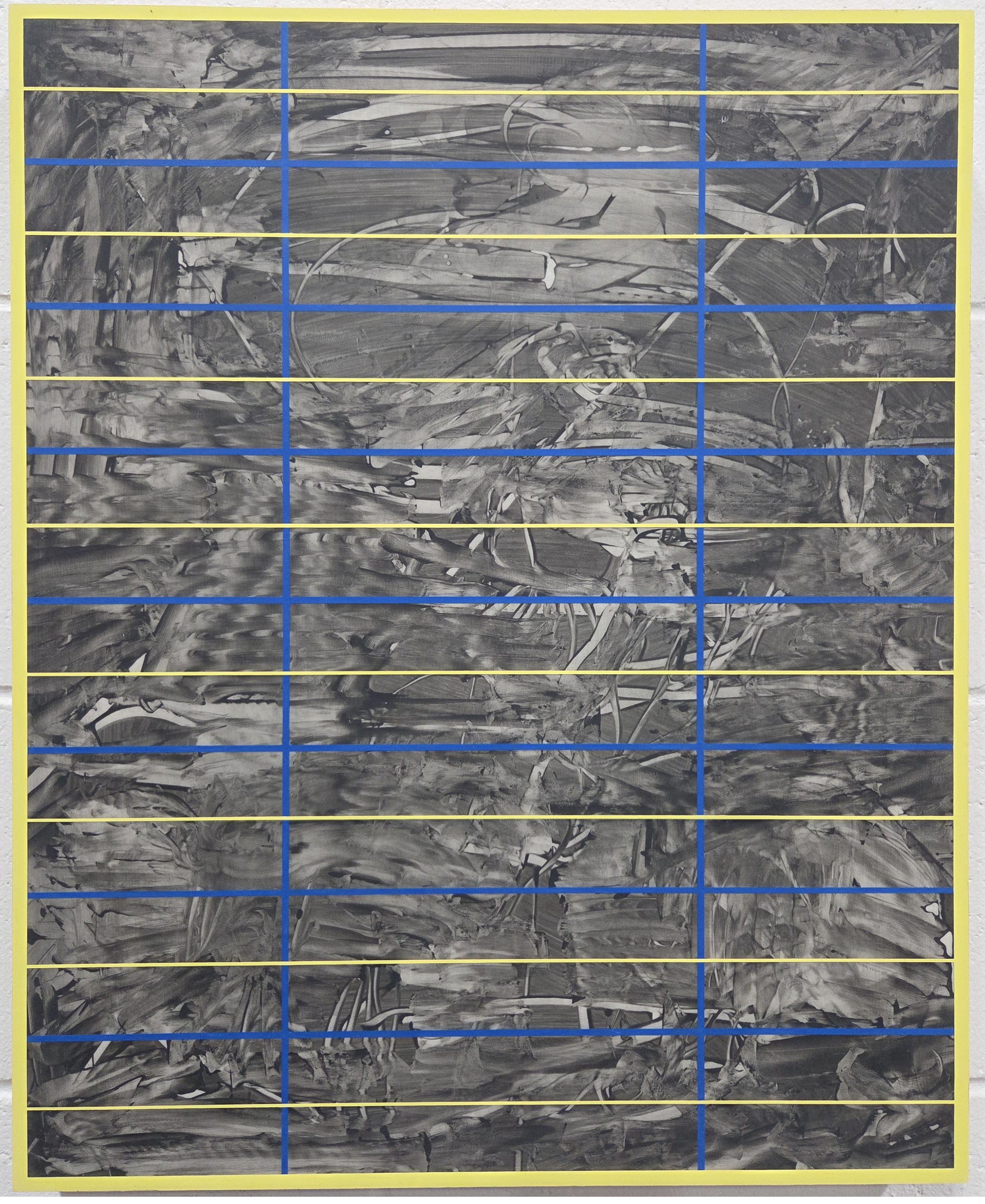
Standing in a bright place 07, Mixed media on Korean paper, ink cake, pigment, 55×45cm (10호) ,2025
열린 변증법
이번 전시에는 이와 같은 방식의 작업들이 20여 점이 소개되는데, 이 작품들에는 질서와 자유, 구조와 해체 같은 대립항이 존재한다. 그리고 그 과정을 통해 절대적 상태로 나아가는 것으로 보인다. 이 대립항들은 서로를 배제하지 않고, 오히려 긴장감을 유지한 채 공존한다. 이 긴장은 화면을 정지된 이차원적 결과물이 아니라, 끊임없이 생성되는 과정으로 전환시킨다. 이러한 과정은 변증법적 운동으로도 해석될 수 있다. 하나의 구조(正)가 화면을 형성하면, 곧 그것은 해체(反)로 향한다. 그러나 두 힘의 흔적은 새로운 합(合)으로 모여진다. 그러나 이 합은 고정된 조화가 아니라, 다시 정과 반의 단계를 거쳐 다른 합으로 나아가는 열린 변증법이다. 이기영의 작품은 헤겔의 정반합을 연상시키면서도, 매번 새롭게 생성되는 과정을 보여준다.

Standing in a bright place 08, Mixed media on Korean paper, ink cake, pigment, 55×45cm (10호) ,2025
그의 화면은 선형적 발전이 아니라, 반복 속에서 차이를 낳는 유동적 종합과 같다. 그리거나 써진 무엇인가는 지워지고, 파내어진 부분은 다시 채워진다. 감정을 불러일으키기 위한 자유로운 신체 행위의 흔적 위에는 계산되고 긴장감을 머금은 직선이 기하학적 질서를 부여한다. 그러나 그 모든 행위는 평평함, 즉 하나의 평면으로 귀결된다. 그렇다면 여기서 애써 만들어진 평면은 무엇을 의미할까? 여러 단계의 수행적 수고스러움에는 어떤 의미가 얹어질 수 있을까? 
전시 전경 (1)
절대적 상태로서의 평면
평면은 오히려 입체보다 고정된 현상을 벗어나 자유롭게 상상할 수 있는 가능성을 잠재하고 있다. 평면은 앞서 언급한 것처럼, 절대적 상태이다. 없음, 즉 무로 향하는 것처럼 보이는 변증법적 과정은 실은 생성의 살아있는 단계에 도달하게 한다. 삶이 결국은 생성에서 소멸로 가는 것처럼 보이지만, 삶의 긴 여정 속에 우리는 무한히 많은 새김과 흔적을 남겨 놓는다. 기쁨과 슬픔, 성공과 실패, 만남과 이별 등 인간이 갖게 되는 여러 사건과 감정 그리고 관계와 기억은 개인의 신체와 인간 존재가 거주하는 세계에 각인된다. 이기영의 작업은 정과 반을 거쳐 합에 이르는 과정 속에 만들어지며 그렇게 만들어진 작업의 결과물인 평면 속에 여러 불연속적 면이 있듯이, 최종적인 부재가 곧 존재이며, 소멸이 곧 생성인 것이 곧 삶의 원리임을 깨닫게 해준다.
정소라(서울시립미술관 학예연구부장)
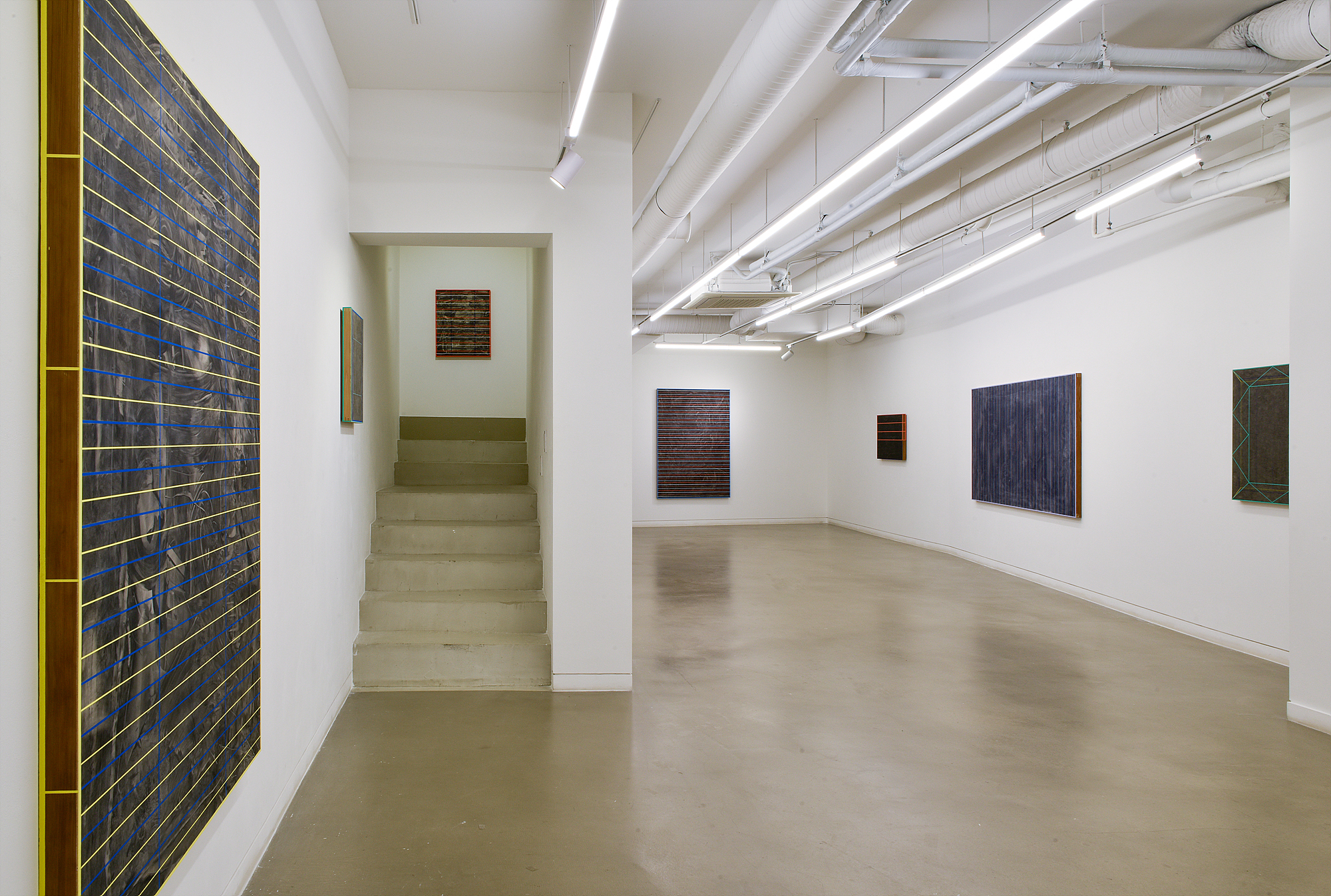
전시 전경 (2)
갤러리밈
서울시 종로구 인사동5길 3
+82 2 733 8877
[GALLERIES] GalleryMEME
- Address
- 서울시 종로구 인사동5길 3
- Dates
- 2025. 9. 10 – 10. 18
- Artists
- 이기영






